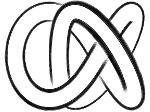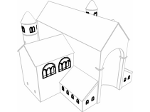Silhouette and Pen-and-Ink Rendering
Hand-drawn pen-and-ink drawings have fascinated me for a long time. Using non-photorealistic rendering I have worked on generating such drawings consisting of silhouette lines and other strokes with the computer.
My specific interests lie in object-space techniques because this allows easy stylization and further processing of the extracted features. I worked on silhouette as well as hatching line extraction from polygonal models and the necessary hidden line removal. I also did research to reduce the visual artifacts that sometimes occur in this type of rendering. The programs implemented within the framework of the OpenNPAR project demonstrate most of these techniques, see the Videos & Demos section. Other techniques address stylization issues such as how to represent style information in NPR line rendering pipelines and the interactive, object hierarchy-independent stylization of line drawings.
However, also image-space pen-and-ink techniques are important and I have worked, in particular, in the field of example-based stippling. This domain tries to capture the style of hand-created stipple illustrations and tries to replicate the captured style for new images, looking both at the stipple dot placement as well as the behavior of the stipple shapes themselves. In this context see the book chapter on stippling that I co-authored and which was published by Springer in 2013.
I worked on fast silhouette and stipple rendering of implicit surfaces. The project made use of some of the polygonal techniques mentioned above to speed up the process of finding silhouette lines and stipple points on the surface of an implicit shape. This is typically difficult because implicits lack the inherent sampling that polygonal shapes possess. The new technique not only allows interactive rendering but also interactive modeling at the same time which is a significant improvement over previous techniques.
Download the video as AVI (37.7MB) or as MP4 (14.1MB)
Pen-and-ink rendering is also important and can be applied in illustration and visualization applications, such as in the medical domain where people are used to traditional illustrations and where approaches are beneficial that replicate such styles with real data:



























